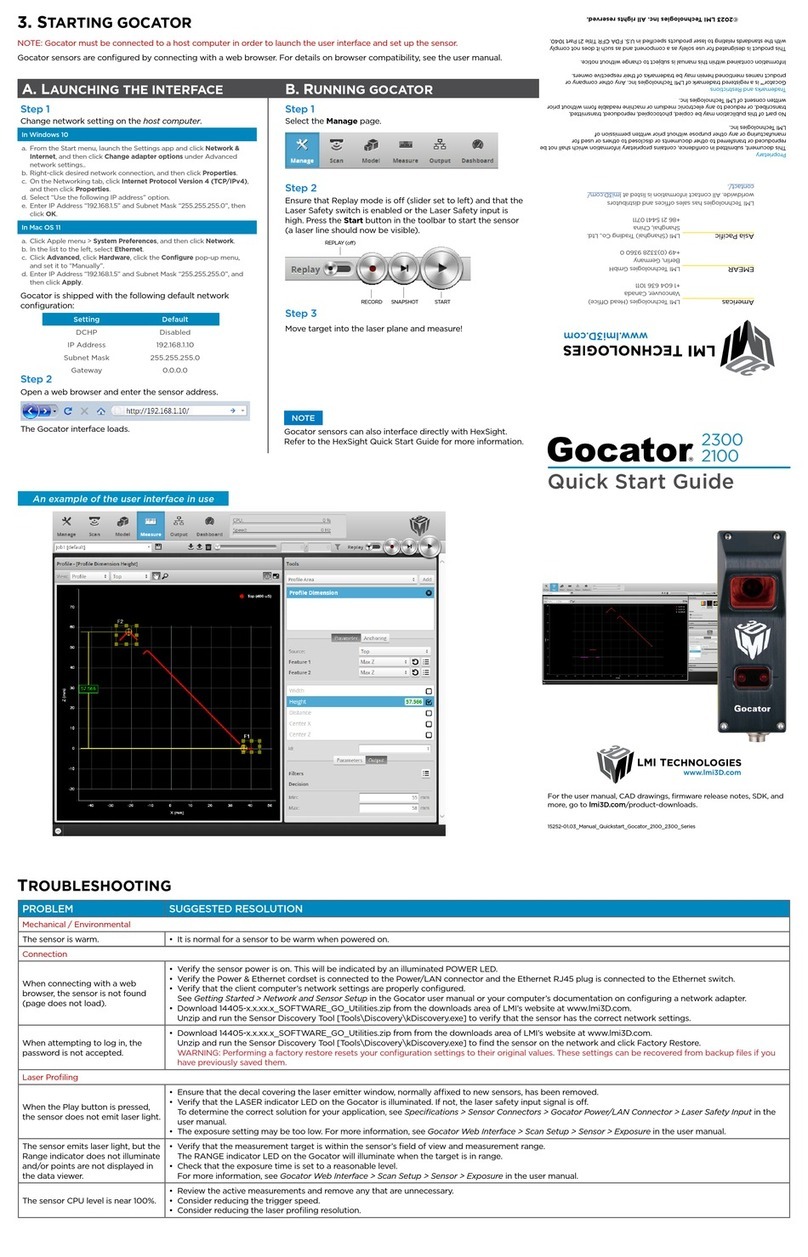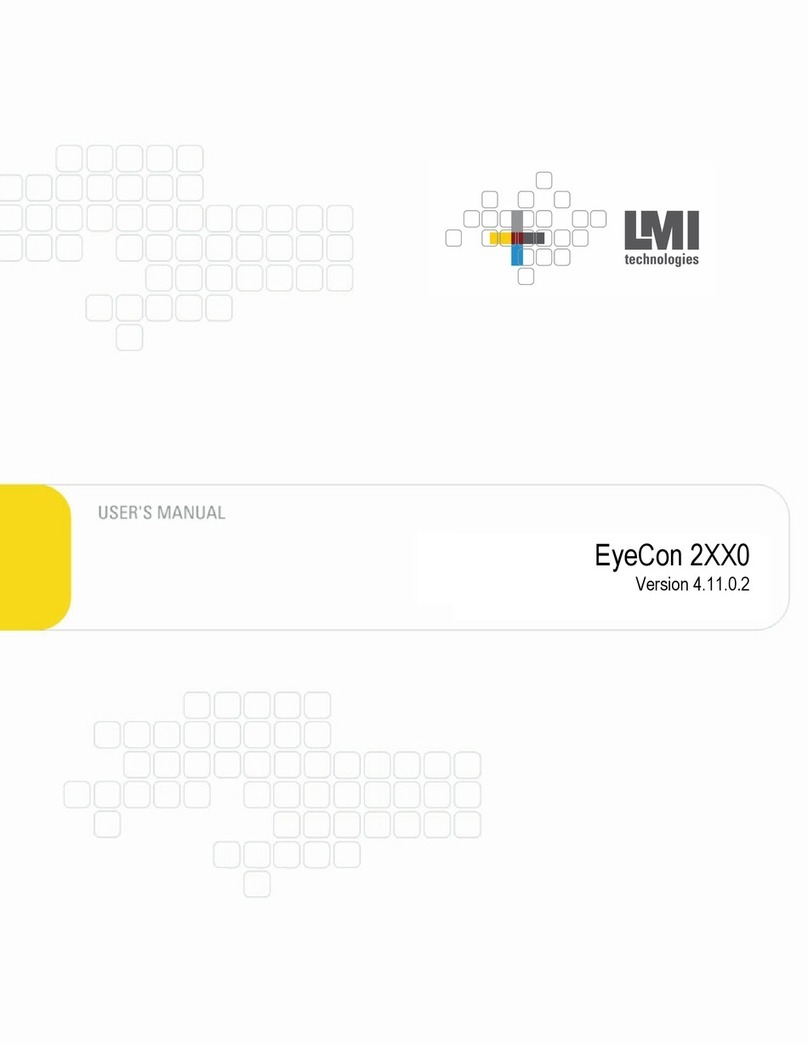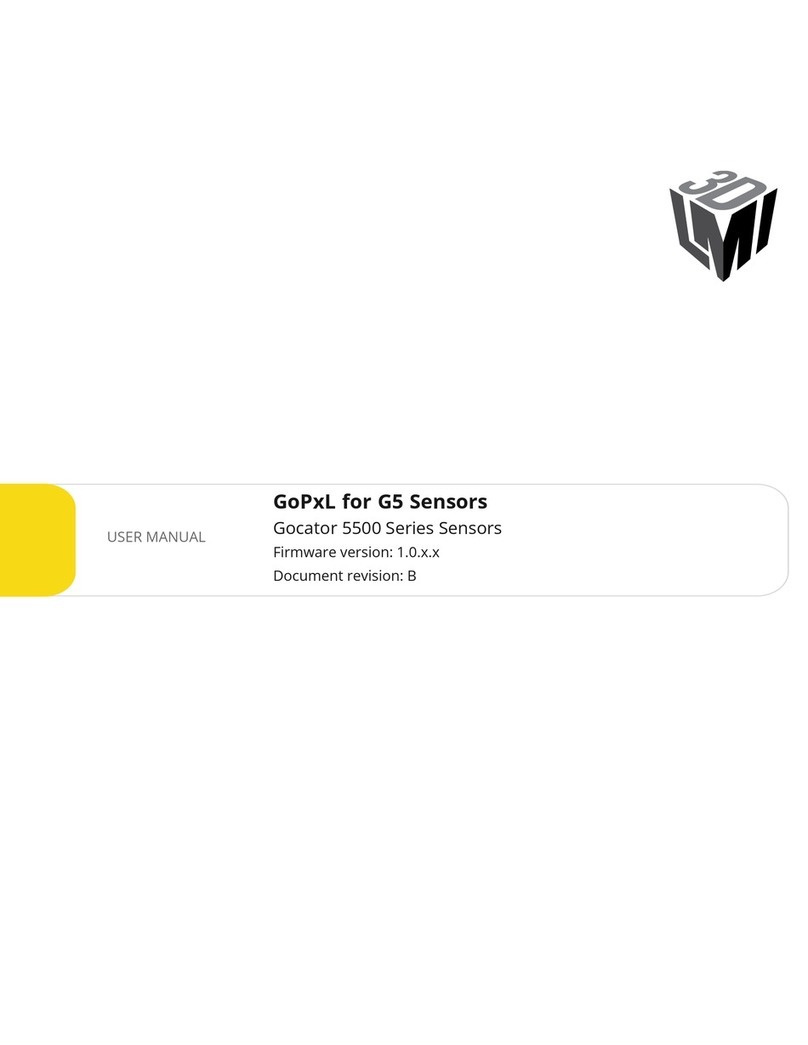
Gocator Line Profile Sensors: User Manual 3
Table of Contents
Copyright 2
Table of Contents 3
Introduction 11
Safety and Maintenance 12
Laser Safety 12
Laser Classes 13
Precautions and Responsibilities 14
Class 3B Responsibilities 14
Nominal Ocular Hazard Distance (NOHD) 15
Systems Sold or Used in the USA 16
Electrical Safety 16
Handling, Cleaning, and Maintenance 17
Environment and Lighting 17
Getting Started 19
System Overview 19
Standalone System 19
Dual-Sensor System 20
Multi-Sensor System 21
Hardware Overview 22
Gocator Sensor 22
Gocator Cordsets 22
Master 100 23
Master 400 / 800 / 1200 / 2400 24
Master 810 / 2410 25
Calibration Targets 26
Installation 28
Mounting 28
Orientations 29
Grounding: Gocator 31
Grounding: Recommended Practices for
Cordsets 31
Installing DIN Rail Clips: Master 810 or 2410 32
Grounding: Master Network Controllers 33
Grounding When Using a DIN Rail (Master
810/2410) 33
Rut-Scanning System Setup 34
Layout 34
System Setup 35
Software Configuration 36
System Operation 36
Network Setup 37
Client Setup 37
Gocator Setup 39
Running a Standalone Sensor System 39
Running a Dual-Sensor System 40
Next Steps 43
How Gocator Works 44
3D Acquisition 44
Clearance Distance, Field of Viewand
Measurement Range 45
Resolution and Accuracy 46
X Resolution 46
Z Resolution 47
Z Linearity 47
Profile Output 49
Coordinate Systems 49
Sensor Coordinates 49
System Coordinates 50
Part and Section Coordinates 52
Switching between Coordinate Systems 53
Uniform Spacing (Data Resampling) 53
Data Generation and Processing 54
Surface Generation 54
Part Detection 55
Sectioning 55
Part Matching 56
Measurement and Anchoring 56
Output and Digital Tracking 57
Gocator Web Interface 58
User Interface Overview 58
Toolbar 59
Creating, Saving and Loading Jobs (Settings) 59
Recording, Playback, and Measurement
Simulation 61
Recording Filtering 63
Downloading, Uploading, and Exporting
Replay Data 64
Metrics Area 66
Data Viewer 67
Status Bar 67
Log 67
Frame Information 68
Interface Language 68
































